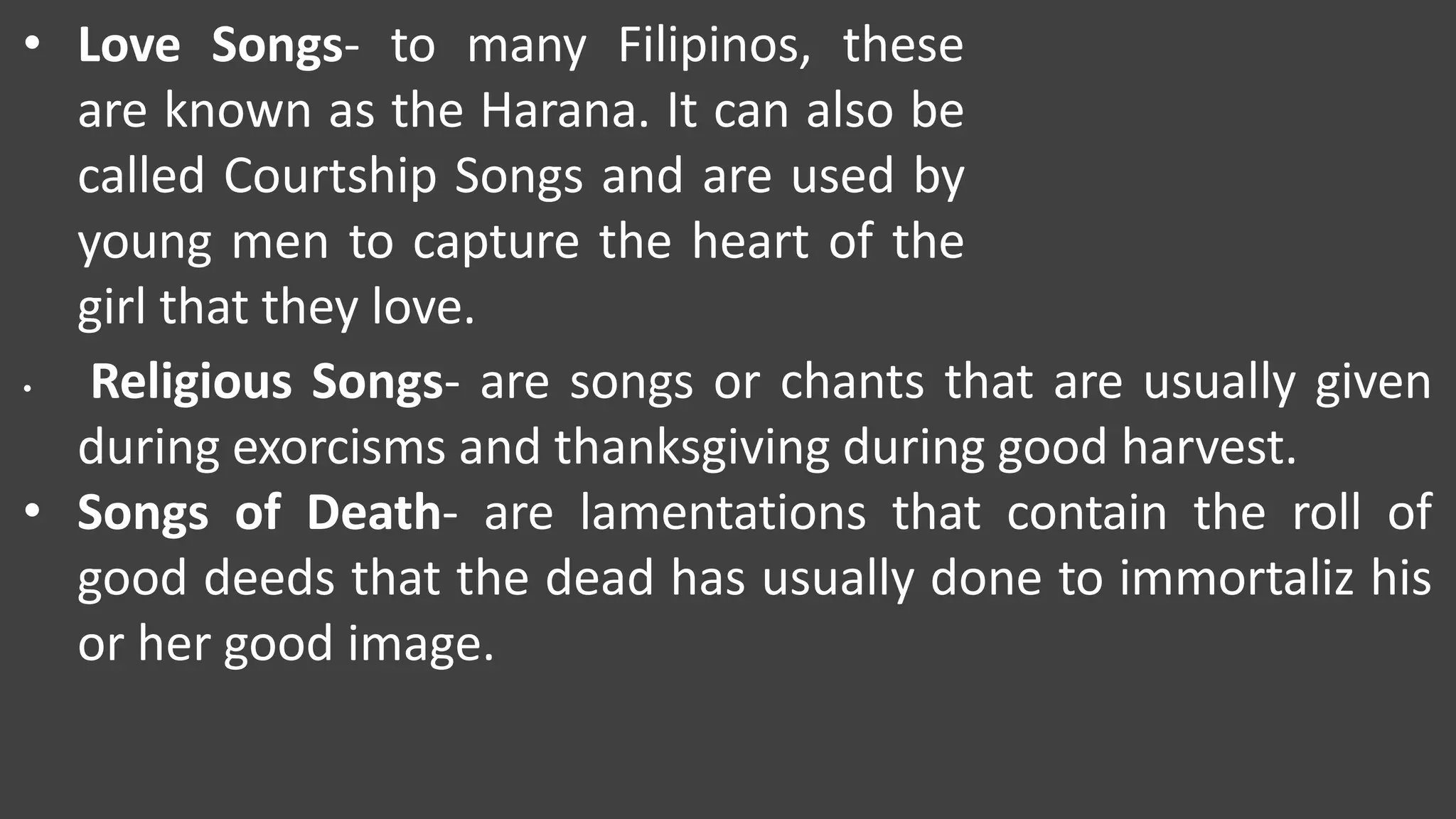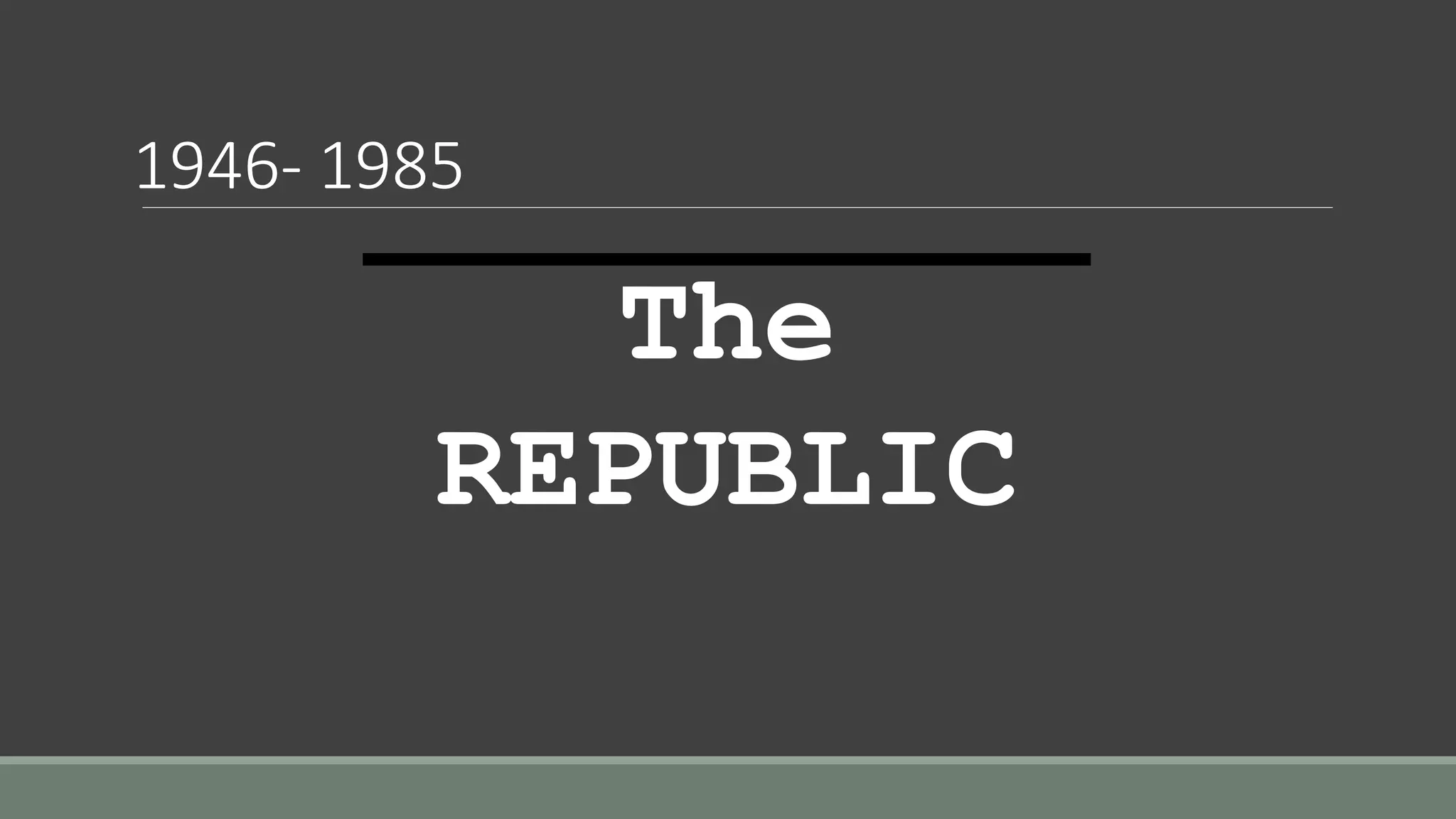This document provides an overview of Philippine literature across three periods: pre-colonial, Spanish, and American. It discusses the forms and examples of literature that originated from oral traditions in the pre-colonial era. When the Spanish arrived in 1521, they introduced religious and secular literature like pasyon, senakulo, komedya, awit, and korido. Propaganda and revolutionary literature also emerged to resist Spanish rule. During the American period from 1900-1942, literature continued in forms like poetry, drama, and remakes of novels, but also imitated American models and addressed life under new colonial leadership.



















































